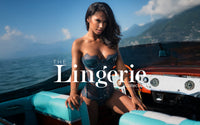We love the styles of rave costumes today. Flirty skirts, bikini tops, bodysuits—we adore it all. But rave fashion didn’t always have these trends and styles. Like any other kind of fashion, it’s evolved over the years, and you might even cringe to see photos of what ravers wore in the ‘90s, just as you’d cringe at pictures of your mother in her ‘80s aerobics gear. But those fashions provided the foundation for today’s rave wear, so let’s pay homage to it but taking a look at how rave clothing has changed over the years.
The ‘90s
Many of the bright colors and fashions of the ‘90s could be right at home at a rave or music festival today! But back then, rave community outfits were more focused on functionality. Phat pants were a staple of the rave world. These oversized pants were not only comfortable, but they had large pockets that made it easy to carry anything with you without having to worry about a purse. Try that in a skintight bodysuit!
Overalls and visors were also popular, and smiley faces adorned many outfits. While colors were still bright and vibrant, they leaned more towards the neon spectrum than the popular pastels today.
The ‘00s
By the time the early 2000s rolled around, rave style had begun to shift. LA’s hip-hop culture became a significant influence in rave fashions. Adidas shoes and bell-bottoms became a staple in clubs and at music festivals around the country, and raver girls often wore cropped baby doll shirts.
Cyber style also became a trend in rave fashions. Dark black clothing with bright neon colors was popular for about the first decade of the 21st Century. However, you can still find a few ravers who rock the cyber look now and then.
The ‘10s
By 2010, rave fashion had started to shift again, and Kandi culture was born. Kandi culture remains a central part of the rave community today, with people using brightly colored bracelets and accessories to form bonds and make new friendships at these events.
Furry accessories also became popular in this era. Animal ears and tails and fur-covered accessories were on almost every outfit. You’ll still see some of these around today, though they’re less prevalent than they were even just a few years ago. The rave shoes of this decade were Converse and Vans, though the real fashionistas began wearing YRU platform shoes. Colors also began to shift towards more pastel tones.
The ‘20s
By the time we hit this new decade, the top color trends were vibrant pastels in metallic finishes, and these colors remain very popular today. Ravers going for an edgier look often opt for all-black outfits, providing a contrasting look to the popular pastels. While tulle and tutu’s were highly popular just a couple of years ago, and you’ll still see a few of them today, most ravers opt for a sleeker look nowadays.

Micro-skirts and micro-shorts, bikini tops, and bodysuits with cutouts make for a chic and sexy look. You’ll also find all kinds of sheer tops, often paired with pasties and bralettes, at raves and music festivals today. The smiley faces of the early ‘90s can still be found, but you’ll also see many alien faces on rave outfits.
Rave outfits nowadays have shifted to sex appeal and flair than functionality. With the tight-fitting outfits most people wear, certain accessories have become essential—like backpacks and fanny packs so that you can carry your stuff with you!
If you’re looking for a sexy rave costume, be sure to check out our vast online catalog to find bodysuits, mini shorts, bikini tops, and more.








